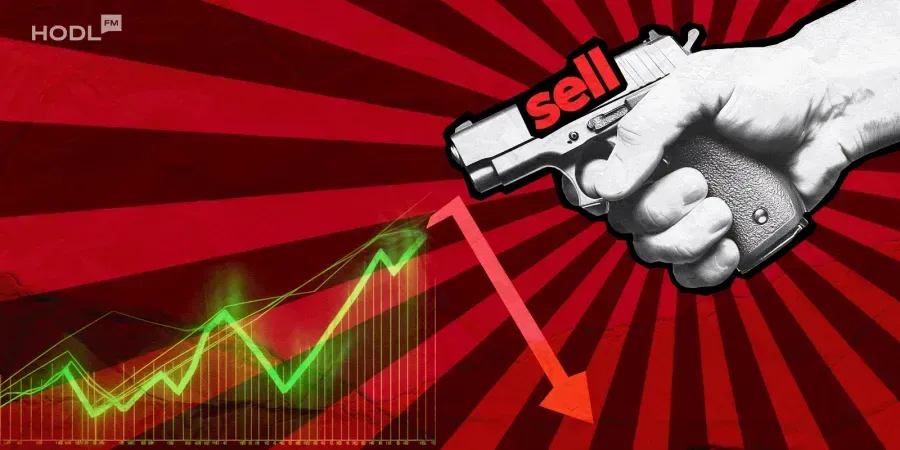The cryptocurrency market is showing signs of maturity and consolidation this week, as Bitcoin and Ethereum continue to command the majority of investor attention while the altcoin sector underperforms. Market dynamics reflect a maturing cycle defined by institutional flows, macro uncertainty, and renewed risk management after widespread liquidations.
Bitcoin and Ethereum retain dominance
Data from CoinGecko shows both Bitcoin and Ethereum holding onto strong year‑to‑date gains, even after the latest pullback knocked the market down 2.74% to a total capitalization of $4.16 trillion.
Bitcoin fell from its recent all‑time high near $126,000 to around $121,500, triggering roughly $659 million in liquidations, including $500 million in long positions over 24 hours, according to Coinglass. Ethereum also slid about 5%, dipping below $4,500, while total crypto trading volumes climbed to $240 billion, signaling elevated volatility.
“The leverage flush was expected,” said one derivatives trader, noting that open interest in Bitcoin futures had surged to extremes before the correction.
“Whales tend to use liquidity pockets like these to reset over‑leveraged markets.”
Analysts broadly agree that the unwind acts as a “healthy reset,” setting the stage for more sustainable price action once uncertainty around this week’s Federal Reserve decision clears.
Altcoins struggle as market matures
Despite notable gains earlier in the year, most altcoins have failed to keep pace with the top two cryptocurrencies.
“Capital naturally prefers assets with high liquidity, clear narratives, and strong certainty,” Jeffrey Ding, Chief Analyst at HashKey Group, said. “A structurally divided market is inevitable under current macroeconomic conditions.”
Institutional inflows through ETFs and corporate treasuries are concentrating capital in major assets like Bitcoin and Ethereum, leaving smaller tokens scrambling for relevance.
While BNB remains one of the standout performers, hitting new record highs this year, many others, including Chainlink, Cardano, Sui, and Dogecoin, have posted single‑digit gains or even double‑digit losses.
The percentage of coins trading above their 200‑day moving average dropped to around 55%, down from a peak of 78% recorded on September 13, per MacroMicro data, reflecting narrowing market leadership.
Meme‑coin momentum and BNB Chain resilience
Even amid the risk‑off tone, certain niches are outperforming. BNB Chain’s decentralized exchange (DEX) volumes surged to $6.05 billion on October 7, its second‑highest level of 2025, according to DeFiLlama, driven largely by meme‑coin activity.
Tokens like PALU, 4, BROCCOLI, CAT, and GIGGLE all posted double‑digit daily gains, while PancakeSwap alone handled $4.29 billion in 24‑hour trading volume.
Meanwhile, USELESS, one of Solana’s leading meme coins, jumped 35%, defying broader weakness and nearly reclaiming past highs. Market watchers point to rising on‑chain speculation and short‑term rotation as contributing drivers.
Institutional flows reshape crypto structure
Experts describe current conditions as part of a long‑term normalization process.
“It’s a sign that the industry is maturing,” said Peter Chung, Head of Research at Presto Research. “Market participants now evaluate projects on fundamentals, not hype.”
He attributes narrowing performance gaps to the rising influence of institutional investors, whose disciplined flows tend to reinforce trends favoring depth and liquidity over novelty:
“The days of retail investors aping in and out of sectors just based on vibes are mostly behind us. Retail pockets of strength exist—Zcash’s 140% rally is one example—but these aren’t market‑wide trends.”
Zcash’s surge, sparked by endorsements from prominent investors, demonstrates that while selective altcoin rallies persist, they are no longer the driver of entire market cycles.
Macro headwinds and leverage reset
The crypto decline also coincided with broader risk‑asset weakness after reports that Chinese regulators accused Nvidia of antitrust violations, spurring a Nasdaq futures sell‑off.
Combined with expectations for a 25‑basis‑point Fed rate cut and hawkish tone from Chair Jerome Powell, traders moved to de‑risk ahead of the FOMC meeting, intensifying volatility across spot and derivatives markets.
Analysts view this positioning as temporary. Historically, crypto markets have tended to regain momentum following major macro announcements once uncertainty resolves and liquidity stabilizes.
What’s next for altcoins
Ding expects selective recoveries once Bitcoin and Ethereum consolidate near current ranges.
“Altcoins won’t vanish this cycle, but any rebound will favor those tied to real‑world utility and value creation, not mere storytelling,” he said.
In the meantime, sentiment indicators, such as the Fear & Greed Index, which dropped from 62 to 55, show a market shifting from euphoria to neutrality, suggesting potential opportunities for disciplined investors during the cooldown.
Key market stats (as of 08 October 2025)
| Indicator | Value | Change (24h) |
|---|---|---|
| Global Market Cap | $4.16 trillion | -2.74% |
| 24‑Hour Volume | $240.6 billion | +18.9% |
| BTC Dominance | 57.6% | — |
| ETH Dominance | 12.6% | — |
| Liquidations | $687.9 million | — |
| Altcoin Season Index | 53 / 100 | Neutral |
| Fear & Greed Index | 55 | Neutral |
| Average RSI (market) | 42.7 | Near oversold |

Disclaimer: All materials on this site are for informational purposes only. None of the material should be interpreted as investment advice. Please note that despite the nature of much of the material created and hosted on this website, HODL FM is not a financial reference resource, and the opinions of authors and other contributors are their own and should not be taken as financial advice. If you require advice. HODL FM strongly recommends contacting a qualified industry professional.





